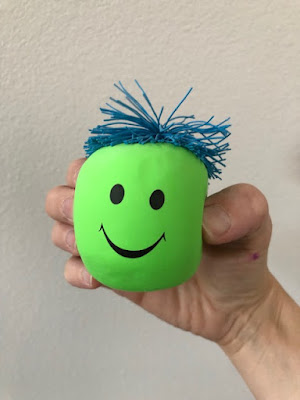Do you believe in offering students incentives for learning or mastering tasks? I know this can be a controversial subject. There has been research that has shown incentives are not good for long term motivation. The best kind of motivation is intrinsic motivation. I understand that...but I also understand that learning an instrument is hard work. As a culture, we ARE motivated by free stuff. I've stood in an unsightly huge line at Jimmy Johns to get a free sandwich, gone shopping in the middle of the night on Black Friday to get a free gift card, and I thoroughly enjoyed my free meal for 'teacher appreciate day' at Red Robin.
Teaching a slew of beginners is hard work! I teach huge groups of students how to play their instruments. With only one of me, and 65+ of them in each class, I can't possibly give each student the one-on-one attention offered by private instruction. Offering little incentives for students to achieve specific learning targets has helped me reach more students in my classes. Used only occasionally, incentives help my students focus and critic their own playing. Out of necessity, I need my students to self-evaluate and self-correct. Students know they are doing the work to improve their playing, and that feels good. A little extra icing on the cake...a little reward...goes a long way to keep students progressing, especially when certain tasks require very detail-oriented work with a lot of self-correction and adjustments.
Sometimes (only 3-4 times per school year) I offer a reward for students who complete a certain learning challenge or master a specific task. I've done this for things like: passing off correct bow hold, maintaining proper left hand position, proper finger placement, completing practice goals, or passing off a specific passage in our music. My beginners are 7th graders and they aren't too motivated by regular stickers and pencils. Here are some things I use for incentives:
INCENTIVES
Magnets
Students can earn these to stick in their lockers as locker decorations.
Case stickers
Students collect these for their instrument cases or orchestra folders:
Balance Birds
For students who are able to play with proper left hand position - on their finger-tips.
For students who are remembering to take their practicing vitamin and meet practice goals:
PROPS
If I can use a prop which captures the attention and imagination of every student and helps them learn a concept more efficiently, I'd say it was worth it. Here are a few fun finds I'm adding to my closet this year:
Carrot pens with attached bunny:
I plan on using these for teaching bow holds. We start out with our hand in a bunny shape, and we do bunny bow exercises. This little pen will help students visualize the correct bow shape.
Sequin Slap Bracelets:
These are to help students remember to keep their wrists out - no hiding their bling with a pancake hand! Slap those wrists into shape.
Funny Face Stress Balls
An entertaining way to build finger strength and mix-up finger training drills.
Tiny bunny charms:
Fun for balancing games. No one wants to let a cute little bunny drop.





















